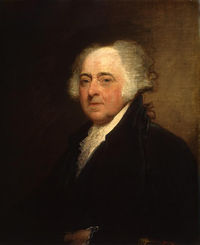 A rare program from the premiere of Many Loves at The Living Theater on December 27, 1958
A rare program from the premiere of Many Loves at The Living Theater on December 27, 1958 The inside of one of the many pages within, but I would guess the most important in which it shows the cast and other information. The date on the program is on its top.
The inside of one of the many pages within, but I would guess the most important in which it shows the cast and other information. The date on the program is on its top. The founders of The Living Theater Judith Malina and Julian Beck.
The founders of The Living Theater Judith Malina and Julian Beck. William Carlos Williams around the time of the performance in 1958
William Carlos Williams around the time of the performance in 1958 The two powerhouses today that are The Living Theater
The two powerhouses today that are The Living TheaterOn December 27, 1958, William Carlos Williams most famous play had its official premiere at The Living Theater in New York.
It was a small theater, but one dedicated to the unusual and the more controversial plays, attitudes, poems, art, and concepts of life itself. It was a place where much of the concept of modern theater started.
Williams was approached to have his play done at the theater for which he was most excited. William's at the time had not been quite a well known name in the world of theater or poetry. He was a unique artist in an age where his art was not yet recognized. So the opportunity to have his show there was a wonderful event for both Williams and The Living Theater.
The play dealt with gay issues that were not then well received by many audiences or theaters in the late 1950's.
It was the first performance and led to that play being performed all over the world and to a degree giving a new life and recognition to Williams. Who was living in Rutherford, New Jersey, in a plain middle classed home. He had never come out of the shadows of many of his contemporaries, but by the 1960's, he was one of the most well known and respected of poets and writers.
Here is some historical information from the Living Theater. Which is very alive and kicking. Still focusing on new and lesser known venues for an eager public.
From the website for the Living Theater
www.livingtheatre.org
Founded in 1947 as an imaginative alternative to the commercial theater by Judith Malina, the German-born student of Erwin Piscator, and Julian Beck, an abstract expressionist painter of the New York School, The Living Theatre has staged nearly a hundred productions performed in eight languages in 28 countries on five continents - a unique body of work that has influenced theater the world over.
During the 1950's and early 1960's in New York, The Living Theatre pioneered the unconventional staging of poetic drama - the plays of American writers like Gertrude Stein, William Carlos Williams, Paul Goodman, Kenneth Rexroth and John Ashbery, as well as European writers rarely produced in America, including Cocteau, Lorca, Brecht and Pirandello. Best remembered among these productions, which marked the start of the Off-Broadway movement, were Doctor Faustus Lights the Lights, Tonight We Improvise, Many Loves, The Connection and The Brig.
Following the death of Julian Beck in 1985, cofounder Judith Malina and the company’s new director, veteran Hanon Reznikov, who first encountered The Living Theatre while a student at Yale in 1968, opened a new performing space in Manhattan’s Lower East Side, producing a steady stream of innovative works including The Tablets, I and I, The Body of God, Humanity, Rules of Civility, Waste, Echoes of Justice, and The Zero Method. After the closing of the Third Street space in 1993, the company went on to create Anarchia, Utopia and Capital Changes in other New York City venues.
















